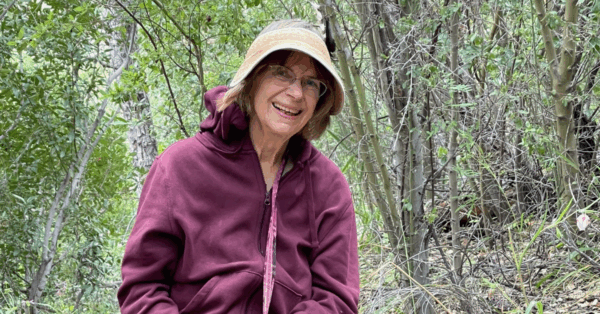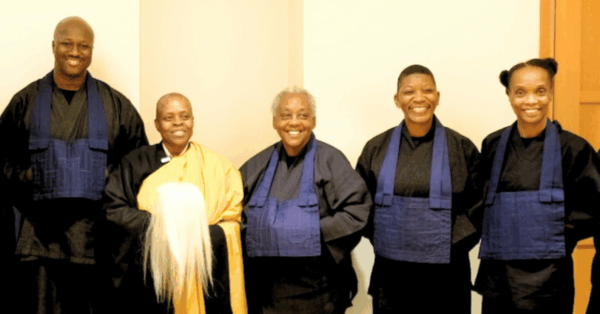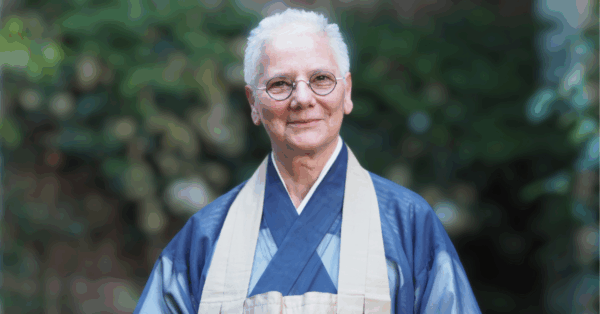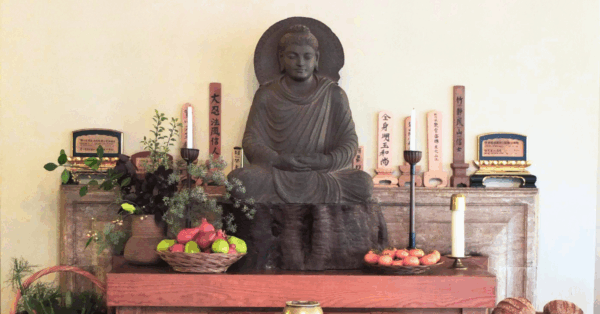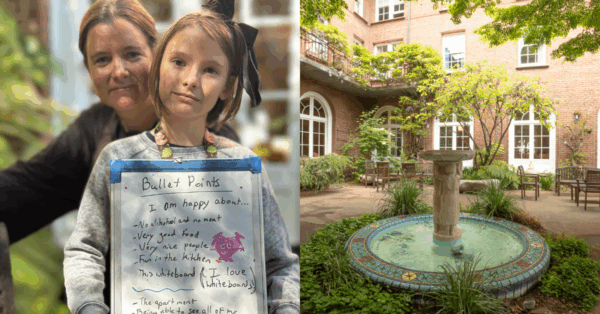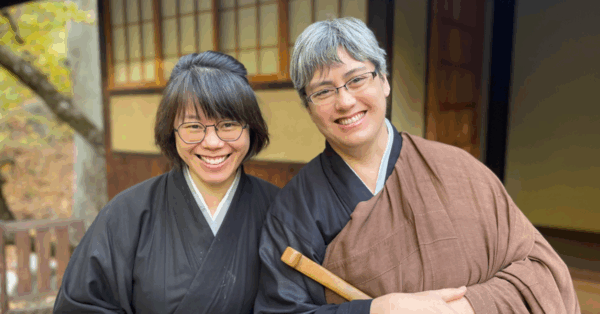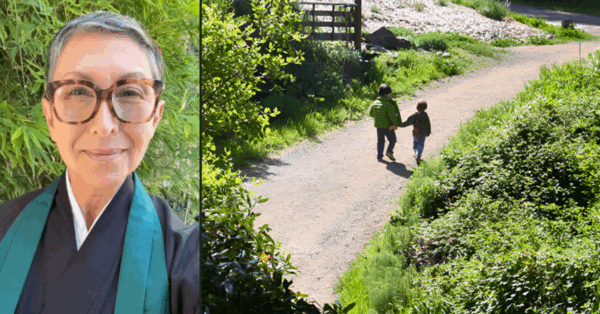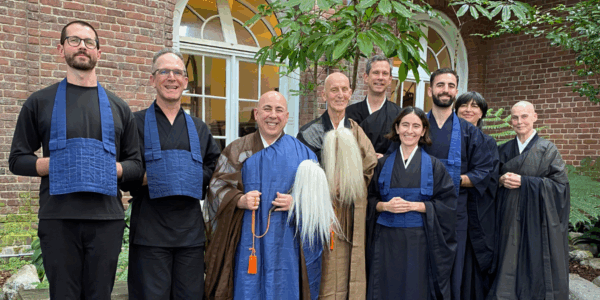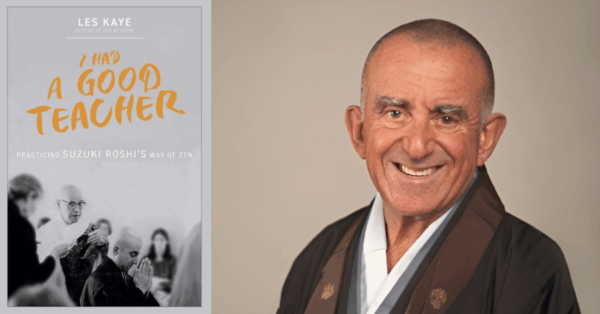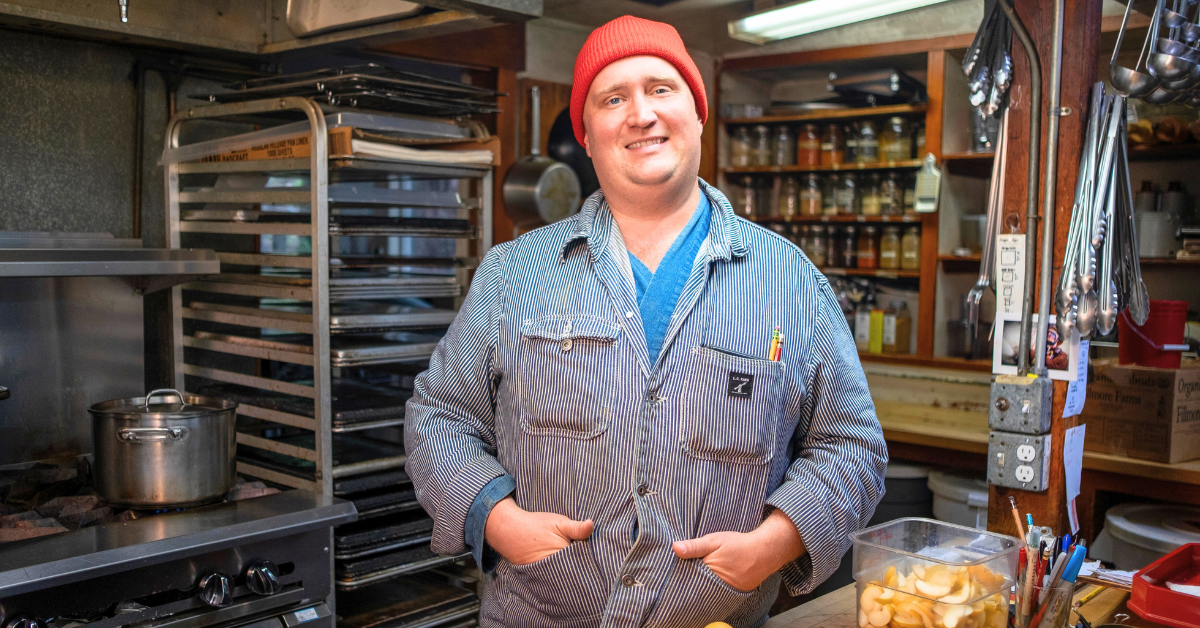
Photo by Jesse Blalock
The kitchen at Green Gulch Farm has nourished many monks, students, guests, and teachers over the past 53 years. As one of the kitchens of SFZC’s three temples, and along with the beautiful fields of GGF’s organic farm, it has inspired some of America’s most revered vegetarian chefs (Deborah Madison, Edward Espe Brown, Annie Sommerville) and pioneered the delicious vegetarian cuisine that is still served today in San Francisco’s legendary Greens Restaurant.
Green Gulch Farm offers a Kitchen Apprentice program for people interested in Zen practice and how it is expressed in kitchen work. For a closer look at what this means, we interviewed GGF’s Tenzo (head cook), Zenko Jordan Montgomery.
Hi Zenko! Please introduce yourself and say a little about who you are, where you live, etc.
My name is Zenko, and I’ve been a resident of San Francisco Zen Center since 2015. My name was given to me by my teacher, Greg Fain. Zenko means “Zen Tiger” for my kitchen practice at Tassajara, where I spent my first eight years at SFZC. My name references “like a tiger taking to the mountains” from Dogen Zenji’s “Fukanzazengi,” showing a natural blend of work and Zen in the kitchen environment.
Most of my work practice has unfolded in the kitchen, as a guest cook at Tassajara for my first two summers, cooking family-style meals for 80–90 guests. Then, as floor manager (Fukuten) and finally as head cook (Tenzo) during the Covid closure, cooking for 8–9 residents.
At Tassajara, I also met my partner, Lauren Bouyea, and we were married in 2019. We had a daughter, Mirabelle, in 2020. I was ordained as a Zen priest the next year, and we moved to Green Gulch Farm in 2023. I’ve been Tenzo here for a year.
What is a Tenzo, and how does that relate to Zen?
The Tenzo holds both the function of executive chef in a commercial kitchen and the spiritual leadership of a Zen kitchen. So there’s the practicality of logistics, ordering, inventory, menu planning, and accounting—and the responsibility of maintaining a work-practice container and helping folks find themselves in their work.
Luckily, our great ancestor Eihei Dogen wrote a whole essay about this job: the “Tenzo Kyokun.” It was the first Zen text I read back in Minnesota when I was practicing at Minnesota Zen Meditation Center, and a clarion call to put the teaching into action in California. There are also many contemporary books and talks from San Francisco Zen Center teachers on the significance of kitchen practice and the Tenzo role.
What is it like to work in the GGF kitchen?
The Green Gulch kitchen is located in the middle of a redwood grove at the heart of the community. If you look out behind the stand mixer, there’s a six-foot-wide redwood filling the window. We offer three buffet-style meals, five days a week—breakfast, lunch, and dinner—for around 50 residents and 30 guests. We have changed the schedule in the past few years to allow everyone a few days off together, including the kitchen crew.
A normal day begins with chanting the Tenzo Kyokun and a short discussion and reflection on the passage. We then have a little crew chat and get to work—there’s always ingredients to chop, something to cook, something to clean, and something to stock. We practice “functional speech only,” which means reserving conversation for work-related things. This allows us to be more aware of our own bodies and movements, as well as the flow of the whole system. We put out lunch and have a long afternoon break for a nap, hike, or walk to the beach.
I really appreciate the relationship with the land we have at Green Gulch Farm, which was not the case in any other kitchen I’ve worked in. Our produce is all organic, coming either from Veritable Vegetable (a local organic vegetable wholesaler) or the farm which is located a very short walk from the kitchen. When keeping a plant-based diet, this is totally essential! We also often incorporate edible blossoms and other forageables in the dishes.
What is your favorite thing about being a Tenzo?
As much as I love it when a plan comes together, creative problem solving is even more satisfying. This summer, our farm produced an overabundance of big, juicy, super-sweet zucchini. How can I find a way to incorporate them into the menu without everyone getting zuked out? I don’t know if I’ve succeeded completely, but it has been fun trying. The Palestinian roasted zucchini and labneh dip on mezze night has been a hit! (See recipe below.) Planning a diverse, in-season, and practical menu brings me a lot of joy.
What is the most difficult thing?
Our kitchen has been in operation for around 50 years, and is currently in another phase of heavy maintenance and updating. My biggest difficulty is when stuff breaks and I need to scramble to find a fix or replacement. Luckily, after lots of stress and coordination, we end up in a better place than we started.
This spring, we updated the entire cook’s line with the addition of a blessed convection oven. The recent heat wave also ended the life of our freezer, and a new one is awaiting installation. Finally, our bakery will get a full refresh in the next month or so after a fire in March 2024. We hope to be baking again soon!
What is kitchen practice?
Oftentimes when I talk to folks about kitchen work-practice, there is some confusion how such great activity could possibly be meditative. Commercial kitchens are notoriously stressful, loud, and, in some cases, even violent, while our main Zen practice, zazen, is quiet, seated meditation facing a blank wall. But zazen would not be a very helpful practice if its influence never left the meditation hall, and the intense atmosphere of the kitchen is a perfect place to stretch stillness into activity. Where are your hands? Can you smell the onions caramelizing? Can you hear the almonds popping in the oven? Cooking requires a balance of intense focus and open awareness, and meditation allows the stressful grind to transform into a peaceful flow (hopefully!). We build our capacity on the meditation cushion to handle every sort of activity with an appropriate response.
What is the Kitchen Apprentice Program?
Becoming an apprentice is a longer-term commitment to Zen training, both in the kitchen and in the zendo. After completing a two-week guest student stay at GGF to get a taste, most applicants return for 3 to 5 months. During that time, students establish their practice more deeply and earn a practice period.
Kitchen apprentice applications at Green Gulch Farm are welcomed at any time, and we could definitely use help right now! During your stay, you will gain the fundamental skills and confidence to cook for a large group of people. In general, apprentices take care of the basic functioning of the kitchen and are encouraged to explore areas of interest they may have. That includes baking, dessert making, and even planning a menu. I also offer food safety training, where you can earn a Food Safety Handler’s certificate, which can be transferred to any kitchen job you may get in the marketplace.
What are some of the dishes the GGF kitchen produces?
On the menu this week is spoonbread (an eggy cornbread), fried green tomatoes (inspired by a recent visit to Greens Restaurant), and braised Green Gulch Farm greens. The next day’s dinner is a light Vietnamese yuba and rice noodle salad with roasted farm broccolini on the side. And a simple pesto pasta to round out the week.
I am always looking for new ways to diversify our menus—from a vegetarian version of a Cuban picadillo to a full on Georgian feast from the Caucasus Mountains featuring khachapuri, eggplant and walnut rolls, and chopped salad.
Anything else you would like to share?
As a romantic idealist type, I find it important to temper expectations a little. Kitchen work can be hard and might not always feel like practice. You get out what you put in, with every effort an opportunity to reflect on yourself and your intentions. I hope to see you on the path.
If you are interested in joining Zenko in the kitchen at Green Gulch Farm, you must begin the process by becoming a Guest Student for two weeks. To find out more and to apply, please read the Green Gulch Kitchen Apprenticeship Application Process section of our website.
From the Green Gulch Farm Kitchen
Mutawan Kusa (Palestinian Zucchini + Yogurt Dip)
Serves 6-8
4 c zucchini, washed
2 cloves garlic minced
2 T lemon juice
1½ c greek yogurt
4 T mint leaves, roughly chopped
Olive oil (about ¼ c)
Salt to taste
Sumac to garnish
Instructions:
Preheat oven to 400°
Prepare the zucchini, washing and trimming ends. Cut in half lengthwise. Rub the cut side of the zucchini with olive oil and sprinkle with salt. Lay on a sheet tray with the cut side up and roast in the oven until completely softened and picking up a golden color, for about 30 minutes for monsters and 15 for mini zukes.
While the zucchini roasts, mince the garlic. In a medium-sized bowl, toss garlic with a pinch of salt and lemon juice and let sit for a few minutes to soften the garlic flavor, if you prefer less punch. Add in yogurt and mint leaves. Stir to combine.
Once zucchini has finished roasting, pull it out and let it cool slightly. While still warm, scoop the pulp and add it to the yogurt; mashing it into the yogurt with the skin is also OK, if the skins are tender. Drizzle with olive oil and sprinkle with the salt and the sumac. Serve warm with pita.


